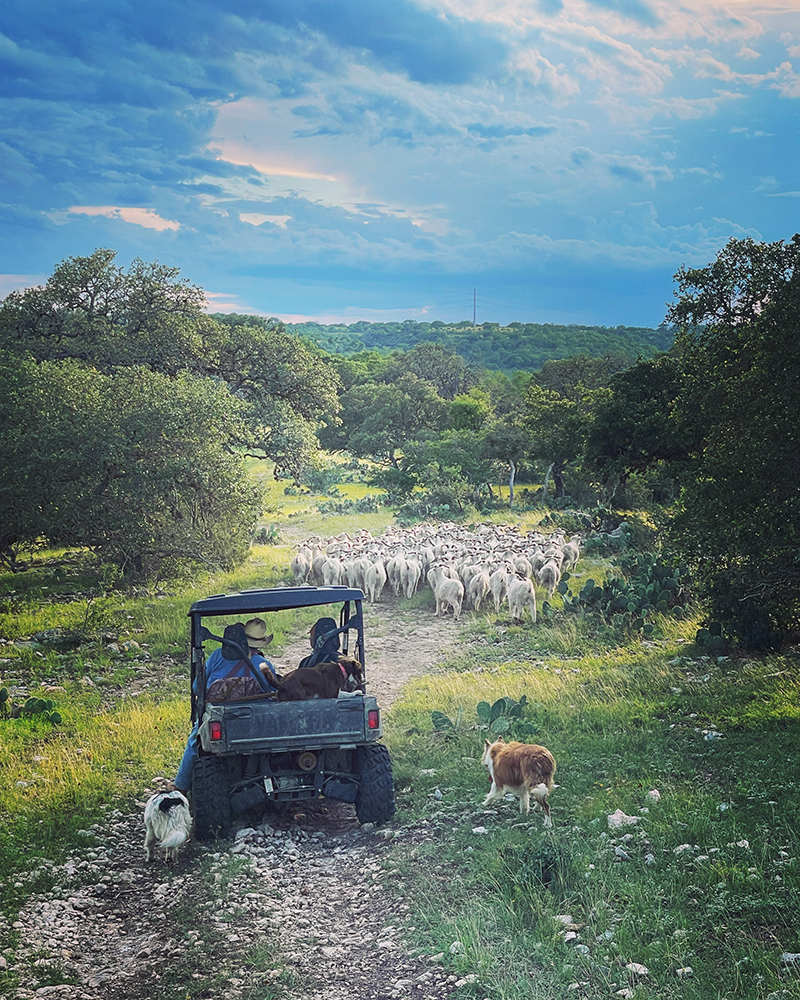There is a time for everything, and a season for every activity under the heavens,” the Bible says. At Hillingdon Ranch, that could mean any number of things, from shearing sheep and goats, baling wool and grading mohair to plowing fields, fixing and building fences, weaning calves, or herding and hauling livestock.
The story of Hillingdon Ranch is an inspiring tale that dates to 1885 when an English gentleman named Alfred Giles began buying land in the Texas Hill Country. Alfred, who trained as an architect in London and immigrated to the United States before establishing his firm in San Antonio, acquired land west of the city that reminded him of his upbringing in Hillingdon, Middlesex, England. Nostalgic for the green fields and black cattle where his family vacationed in Scotland, he set out to recreate a version of that bucolic setting in his new American home.
It’s been over a century now since Alfred passed away, yet his reputation prevails in this neck of the woods. Admittedly, most know him as the acclaimed architect whose many public and private structures, including Fredericksburg’s Pioneer Memorial Library, the Morris Ranch Schoolhouse, and the Courthouse in Presidio County, are now listed on the National Register of Historic Places.
Unbeknownst to some however, Alfred left behind much more than his accoladed buildings, with their thick stone walls and stately facades. At Hillingdon Ranch, his legacy lives on through the generations of family members who are maintaining his over 13,000-acre, 19th century ranching estate.
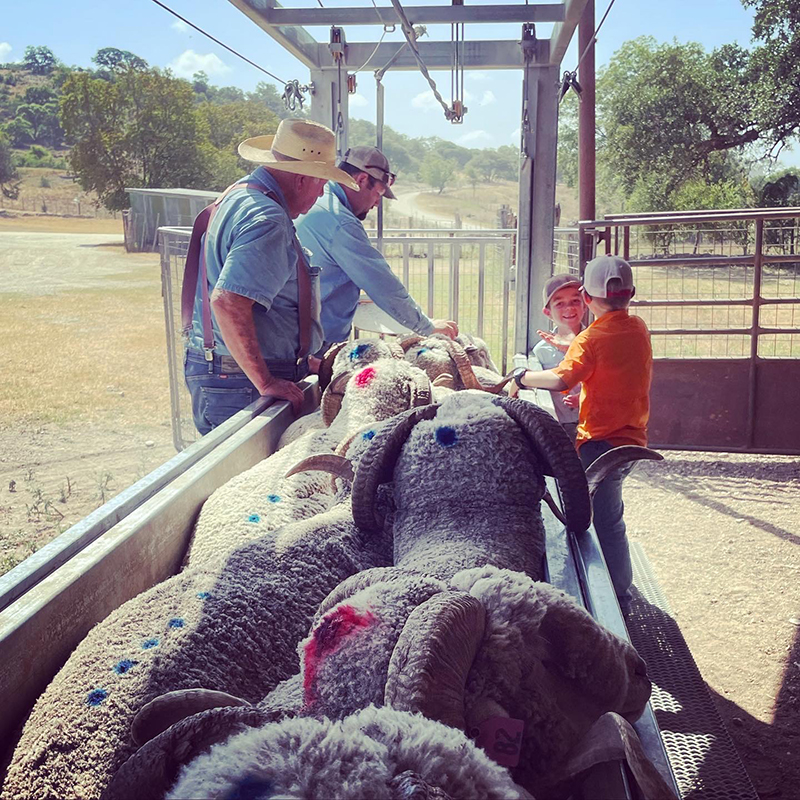
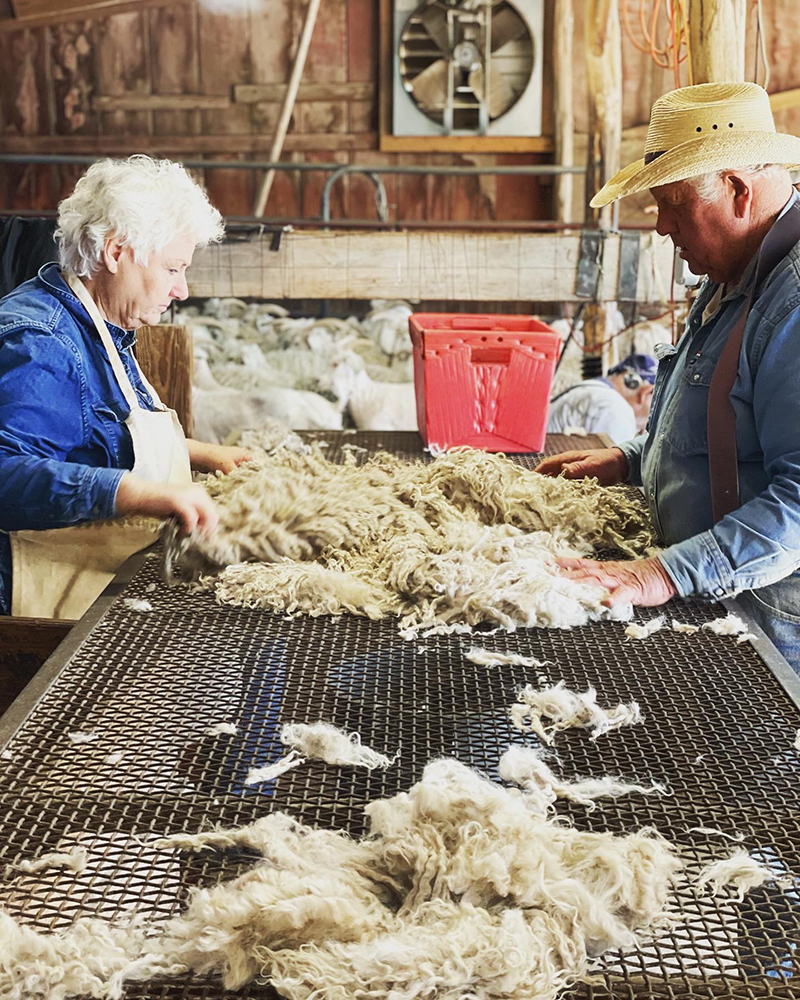
Today, the expansive property, located in the hills of Kendall County between Comfort and Fredericksburg, is divided amongst an intricate web of over three-hundred distant relatives who call this land home. In his book, Hillingdon Ranch: Four Seasons, Six Generations, David K. Langford, an extended family member, writes, “The health of our natural resources depends on stewardship, and stewardship needs stewards.” Luckily, Alfred’s grandson, Robin, and his wife, Carol, are among the lead stewards at Hillingdon Ranch, along with their son, Grant, daughter-in-law, Misty, and their young grandsons, Wade and West.
For the Giles, ranching at Hillingdon is not only a beloved vocation but a responsibility to private land stewardship and the ecological wellbeing of Texas. “I give grandpa credit for instilling in us the value of a homeplace because he came from England where land was already very dear,” Robin says. “Here, land was not as dear, but it was to him, and he instilled that into his children.”
Preserving the ranch is a labor of love for Robin, Carol, Grant, Misty, along with Wade and West, who work diligently to keep operations running smoothly and communication flowing freely across the Giles’ family tree. “We spend a lot of time with our cousins making sure they have wills in place that are giving their land to people that will keep it,” Robin shares. “The ranch holds the family together, but the family has to hold the ranch together.” The fact that it has done so for over five generations is both an extraordinary testament to the Giles family, and an anomaly in a time of fast urbanization.
Alfred Giles may have been the founding father of Hillingdon Ranch, yet his passion and commitment to his various design projects ultimately outweighed his ranching interests. Luckily, Alfred’s son, Ernest Palmer, and his daughter-in-law, Edith, took a liking to the lifestyle, and grew the ranching footprint at Hillingdon over the course of their lives. Still, the family has Alfred to thank for many of his early acquisitions, including the introduction of some of the first prized Angora goats to the Texas Hill Country.
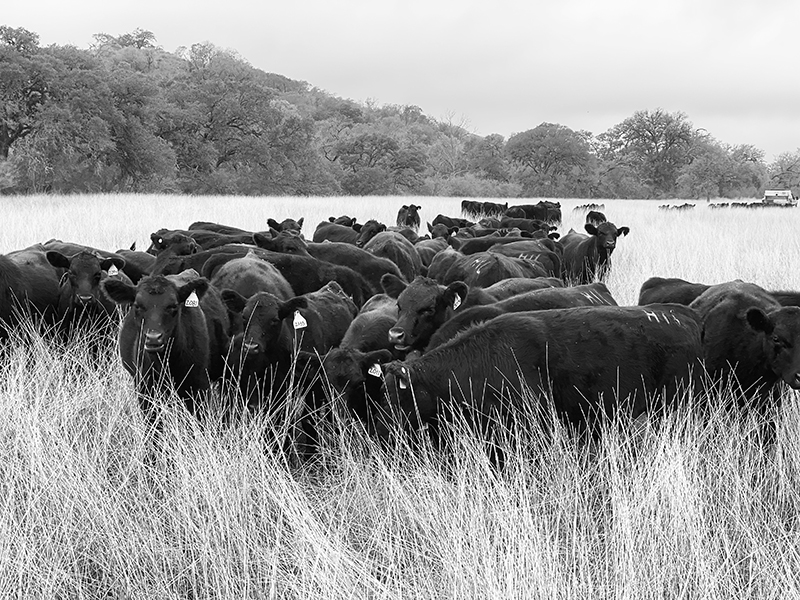
Today, these goats remain one of the family’s most valuable entities due to the ecological benefits mitigating juniper encroachment, though their mix of livestock also includes fine wool sheep and Registered Angus cattle. “The Angus Association said we have one of the most unique Angus herds in the world, with our herd tracing back to the three original cows Alfred Giles acquired in the late 1880s,” Robin shares. “They don’t know of another herd in this country that could say that; even the herds in Scotland don’t have the continuity we do.”
Intentionality is a hallmark at Hillingdon Ranch, and well-demonstrated in the family’s focused approach to range management. “If you don’t manage range your operation will cease,” Robin says. “Every piece of land here gets used and rested every year. It all depends on the rainfall and temperatures.”
Over the years, the Gileses have been pioneers in progressive producing, breeding animals with genetics that have adapted to the often-extreme environmental conditions of the region. “We try not to amend the environment that we’re selecting our animals under,” Robin says. “We want them to exhibit their ability to live on the land with very little outside help.”
Their sheep, for example, aren’t treated for internal parasites after becoming studs. “Mother Nature is an objective judge, and we don’t interfere with her choices,” Robin explains. “Our goal is to perpetuate genetic strength, not weakness.” Furthermore, the family sonograms their female ewes, only taking ewe lambs that come from twins. It’s not necessarily the twinning trait they’re after, but rather, that they will double, triple, and even quadruple ovulate under the conditions they’re expected to live under. Meanwhile, their cows are self-sufficient, birthing calves on their own, and utilizing low quality forage while maintaining profitable calving intervals. Supplementing livestock with feed and hay is not a part of the Hillingdon system, and for good reason. “Whenever you feed hay to cattle you distort the environment,” Robin shares. “If you’re going to make a living, you’ve got to have livestock that takes care of itself.”
Recently, Grant has noticed a striking similarity between the hardiness of Hillingdon’s animals and the enduring designs of his late great-grandfather. “Like Alfred’s buildings have stood the test of time, maybe that same mentality transferred over to the livestock,” he says with a smile. “They can take care of themselves.”
Timing is an important factor in Hillingdon’s seasonal operations. For one, the family plans for calving and breeding during the early spring months when forage conditions are more readily available. They also plan carefully controlled, rotational grazing across their network of more than 13,000 acres, manipulating the pool of roughly two-hundred cows, two-thousand goats, and five-hundred sheep back and forth from one family’s plot to the next.
Livestock aside, the Giles are deeply dedicated to keeping the land balanced, productive, and diverse. “There are plants that increase and decrease whenever there’s utilization, and there are plants that invade depending on their utilization, and you need to be able to know those plants well, why they’re there, and make adjustments all the time,” Grant explains. “We are constantly in an ebb and flow.”
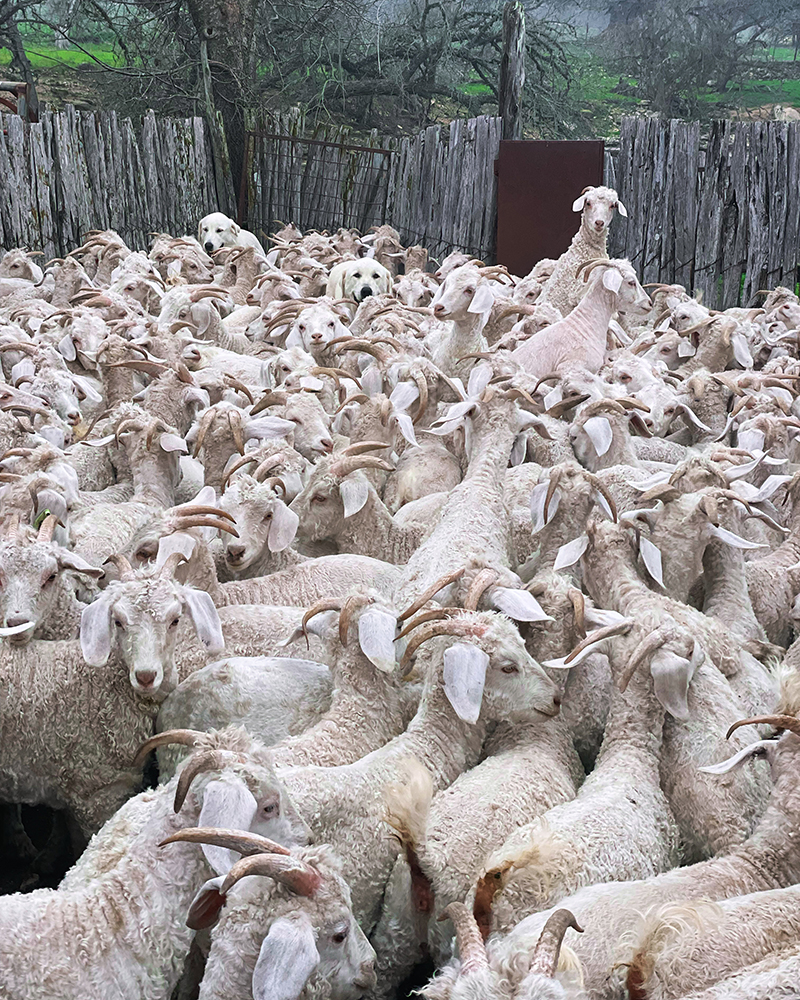
Over many decades, the family has welcomed an eclectic assortment of guests to Hillingdon Ranch, including lease hunters and amateur photographers, along with students, professors, and researchers from around the world. “We feel a huge obligation to share the stewardship story with the public,” Grant says. “Although production agriculture is central to our existence, outreach and tourism are increasingly essential in conveying the benefits of working lands.”
Despite a growing number of ranches being sold and subdivided across the state, the Giles family remains wholeheartedly committed to keeping theirs together. “We have no control over how much pressure there is on the land value, but we can try our best to keep up with the improvements we feel help the next generation hold onto that ownership,” Grant adds. More and more, he’s witnessed families pass down properties, only to watch as their fences, roads, and water systems deteriorate, followed by the next generation’s desire to maintain them. “Even though some of these tracts aren’t owned by us, we try our best to keep the functionality of the land going. We’re benefiting from something multiple different generations did before us and it’s up to us to do things that the next generation can benefit from too,” he shares. “It’s an incremental investment every year that takes effort and time, but the challenge of making it work gives us purpose.”
While the family and their ranch are perpetually adapting and evolving, some things have never changed. Robin and Carol still live in Alfred’s 19th century home onsite, which was originally a one-room schoolhouse. Inside the headquarters’ Great Room, the Gileses regularly gather around a long wooden table, located nearby a central hearth. Wind sweeps through the open screened windows and into the limestone dwelling, where books, photographs, and memorabilia are scattered about. Chief among these possessions are collections of red-leather diaries first written by Alfred in the 1880s, and which continue to be used for logging livestock counts, inventory, husbandry practices, and succession planning, to name a few.
On a warm morning at the start of summer, the Gileses gathered around their wooden table, sipping hot coffee with Grant and Misty, along with Wade and West, who’re among the fifth generation living at Hillingdon today. “Those kids have learned more about conception, birth, and death than most people have in their lives,” Robin remarks, pridefully. He himself can vividly remember being a kid here, playing with rattlesnakes in shadowed sheds, and riding bareback for hours amidst the sun-dappled bluffs, valleys, fields, and sparkling springs. Those memories, and the ones created by all the family members around him in years since, have made Hillingdon an irreplaceable home for the ages. For Misty, marrying into the family and helping perpetuate its traditions is a privilege she takes seriously. “In today’s world, it’s so rare to have family land and close relationships with extended family,” she says. “We hope to pass on the lessons learned, values instilled, and wisdom gained in order to keep this ranch together.”
Over Carol’s lifetime, she has witnessed countless cousins and kin come together at Hillingdon for life’s biggest milestones. “There have been family births, we’ve had weddings and funerals out here, and all the cousins want their kids baptized in the creek,” she shares adding, “It’s the whole lifespan.” Indeed, Hillingdon is still a thriving ranching entity, and a rare tribute to a large family who has worked tirelessly to keep their property together in a fast-changing world. Though the road hasn’t been easy, the effort has been worthwhile. “It’s a legacy,” Robin says, “and we believe it’s worth preserving for the next generation.”


